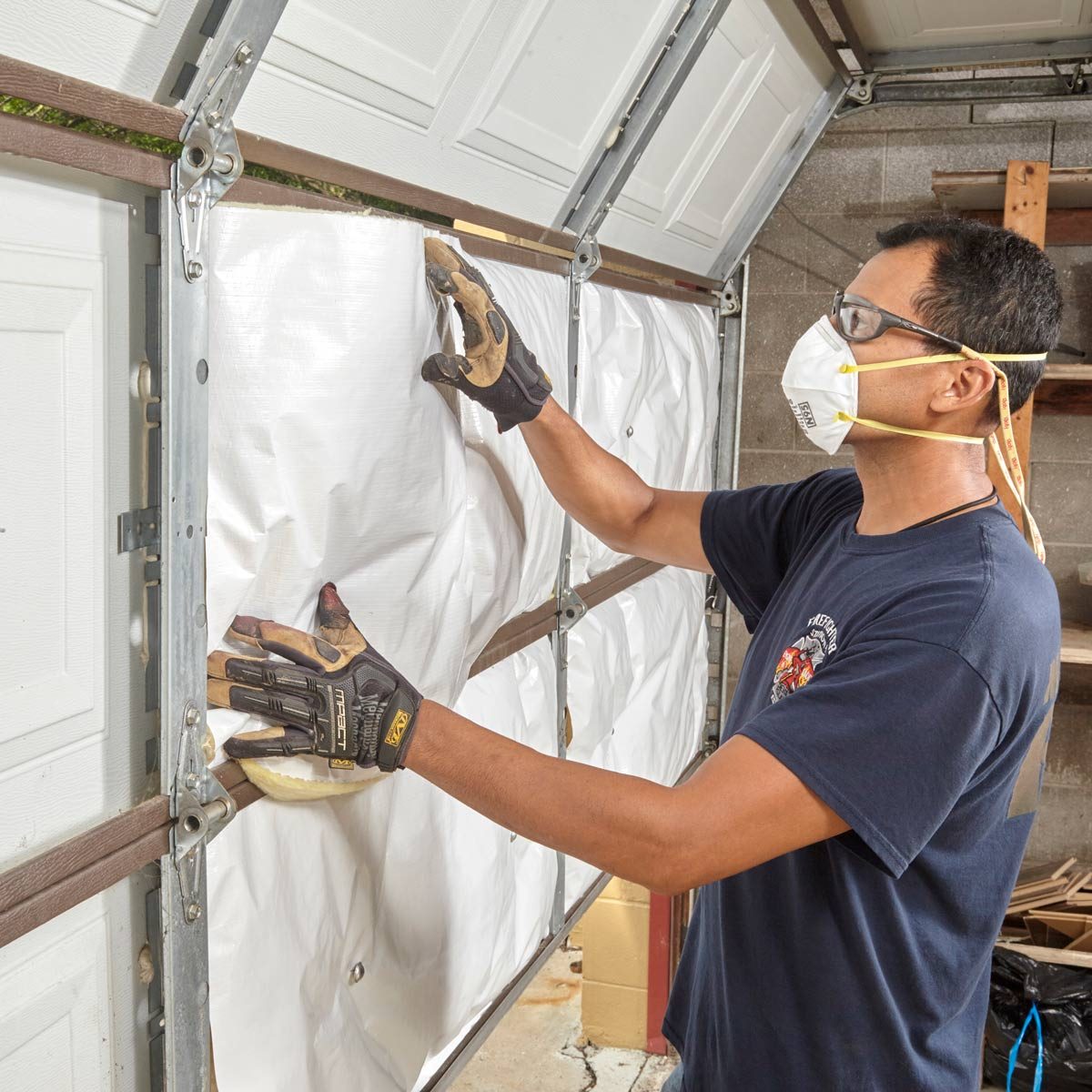Types of Garage Door Insulation
There are two types of garage door insulation kits well-suited for a DIY garage insulation project. An R-8 vinyl-faced fiberglass batting kit provides a relatively high R-value. It takes two kits to insulate a typical 16-foot wide garage door. Here’s what you need to know about fiberglass garage doors.
Alternatively, you can buy precut R-4 expanded polystyrene (EPS) panel foam. Just cut each panel to length and bend and snap it into the horizontal rails on your door. However, at R-4 per inch, EPS has the lowest R-value. If you live in a moderate climate, that may be enough and could be cheap insulation for a garage.
If you’re willing to do a lot of precise cutting, you can achieve a higher R-value, up to R-9.8 with 1-1/2-inch- thick foil-faced fire-rated extruded polystyrene (XPS). Unfaced, non-fire rated XPS rigid foam is not suitable for insulating garage doors, especially in a heated garage. This type of foam is highly flammable and can produce toxic fumes when ignited.
Next, buy enough doorstop vinyl weather stripping to seal the top and sides of your garage door. You’ll also need a new vinyl bottom seal to fit your existing track, or buy a new track if yours is damaged. Make sure you know everything about vinyl garage doors.



























